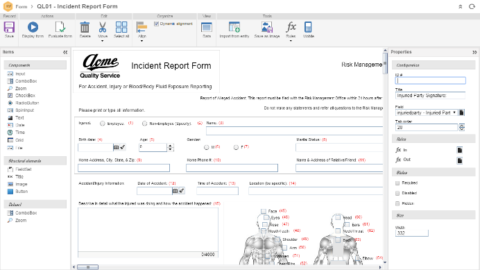
In addition to clearly defining OEE computational goals and objects, managers also need to understand and take advantage of OEE to solve problems at their organizations.
Note 3: Use OEE as a metric.
Like any other metric, OEE can be used as an indicator of comparison, and some managers have relied on it to blame or blame their employees if OEE is low or low on trend. downward direction. However, OEE should not be used this way.
OEE needs to be the metric to improve device performance. Before every change in OEE, managers need to work with their employees to analyze (5 Why, statistics, fishbone chart, etc) and understand what needs to change in the production process. In this way, you will get real value from OEE and successfully apply TPM.
Note 4: Use OEE as an improvement metric.
The key value of OEE is that it helps you understand and analyze six major production losses. Think of it as an improvement, not a KPI.
When you are not making your order on time due to a device not working properly, you need to know why. Now OEE will help you find the cause, as OEE provides levels of analysis to help you improve OEE by pointing out losses like: Is there too much downtime? Not enough production orders to run? Too many false products?
I use OEE as a concept rather than as a performance indicator, said Jim Leflar, senior mechanical engineer at Avago Technologies. We use it to train what losses are, and have a common understanding of the current status of losses for the month; and how to define losses, classify losses according to six main groups, in the production chain. With OEE, it doesn’t tell you how much your losses are but it can tell you that you are operating at 80% or 90% below perfection. However, you will have to analyze metrics, to analyze your losses.
Specifically, if your production is running normally, you might think “we’re doing as well as we were before; and there is nothing to improve or improve”. In fact, in many cases, machines can operate in a certain way for many years; everything is the same and is accepted as usual; And no one thinks there is another way to do it or not. But if we compute OEE and organize a centralized improvement team, and look at each step in the manufacturing process or at each machine and identify the activities that don’t create value, it’s all defined as the Show somewhere in the OEE data. We can compute OEE on a given machine and quite easily identify opportunities to reduce 6 large losses.
In many companies, the goal is based on production plans but not on theoretical capacity (eg a line can produce 60 cars a day, but the production plan is only 40 cars a day; since when the company produces 41 cars per day, the target is met (but in fact, the company is producing at a significantly lower rate than the actual production capacity).
OEE helps to evaluate the ability of the equipment to meet the production needs of the theoretical capacity.
+ If you do not meet the demand and you find that the equipment is performing poorly (performing at low OEE), you know that you have problems with the equipment’s efficiency; and has the potential to improve device performance.
+ If the equipment is operating at a high OEE but not meeting customer demand, you know you have a production capacity shortage problem;
And even if you are meeting current needs, without OEE, you don’t know if you have the backup capacity to keep up with changes in demand. OEE will let you know if you need to buy new lines as you get more orders.
Productivity and Quality Office